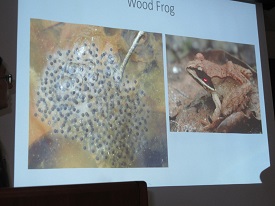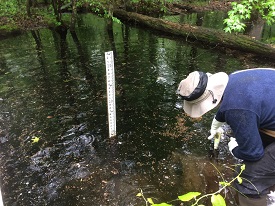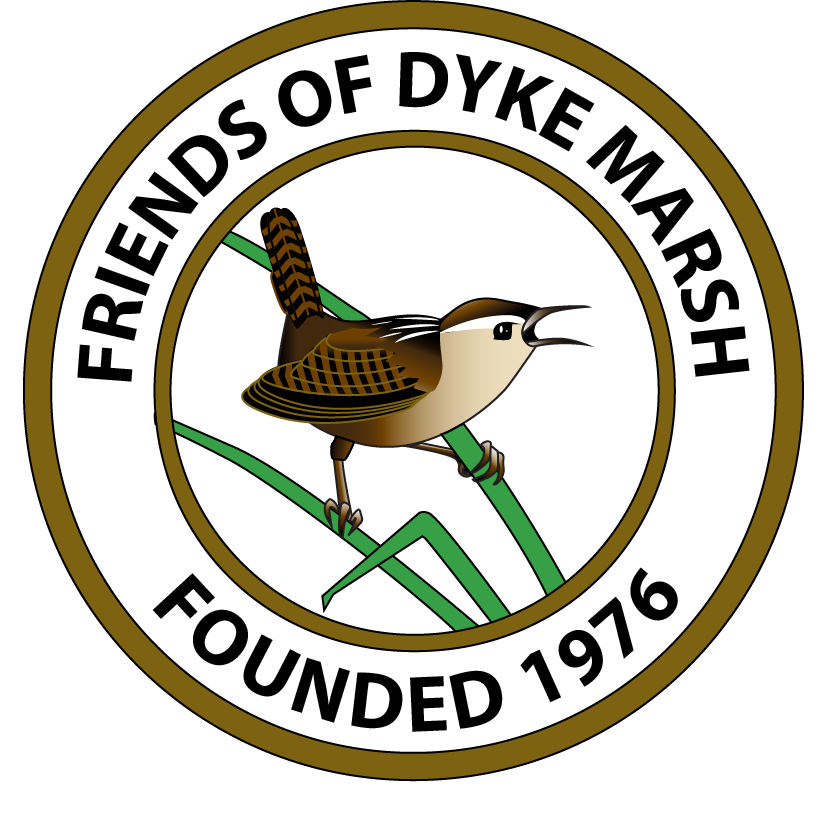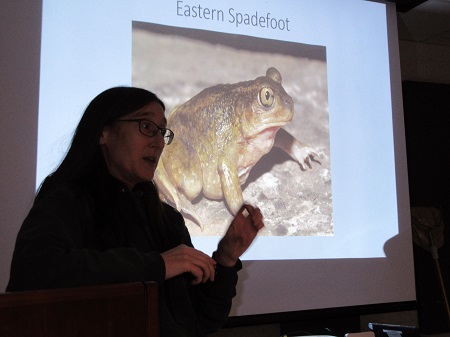Karen Sheffield explored the characteristics and importance of vernal pools to a rapt audience of 60 on March 3, 2019 at a meeting sponsored by the Friends of Dyke Marsh, Friends of Huntley Meadows Park, Friends of Mason Neck State Park and Friends of Accotink Creek. Ms. Sheffield is the manager of Huntley Meadows Park and Historic Huntley, Fairfax County Park Authority, and oversees a survey of vernal pools there.
She explained that vernal pools have four features, according to the U.S. Environmental Protection Agency’s definition. They –
- have surface water isolation;
- have generally shallow depth and small size;
- dry periodically; and
- support a specially-adapted biological community.
She introduced attendees to some of the species typically found in vernal pools, including fairy shrimp, wood frogs and spotted and marbled salamanders.
The vernal pool survey at Huntley Meadows Park, which started in 2013, covers 12 pools. Volunteers are helping park managers answer four questions:
- What are the hydroperiods, how long does water stay in the pools?
- Are obligate species present and if so, what?
- Is there evidence of breeding?
- Is there evidence of breeding success?
Getting reliable data and reaching conclusions will require at least 10 years of study.
Vernal pools are important to the food web, are indicators of environmental health and support rare and threatened species, she said.
Photos contributed by Glenda Booth.
 Ms. Sheffield's slide showing egg masses of the wood frog (Lithobates sylvaticus). Ms. Sheffield's slide showing egg masses of the wood frog (Lithobates sylvaticus). |
 Volunteers are helping conduct a study of vernal pools in Huntley Meadows Park. Volunteers are helping conduct a study of vernal pools in Huntley Meadows Park. |


